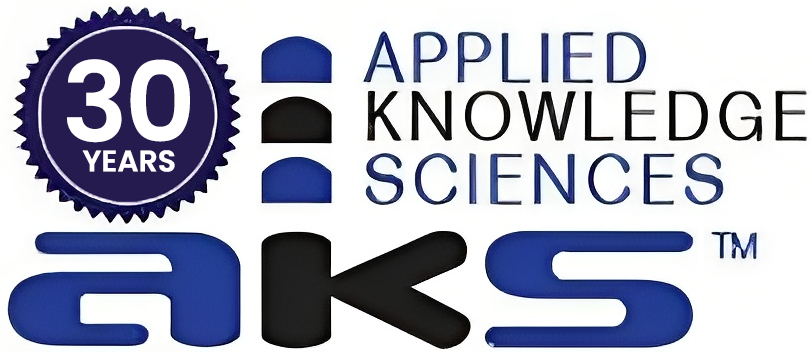Knowledge Governance
Given how fast human and machine knowledge is expanding, do you really know where your organization’s critical knowledge is located?

AI and Machine learning platforms are valuable tools for discovering hidden patterns and trends. But they often provide little or no insight into how their knowledge is generated, or when a model or algorithm is no longer valid.
- Are you using the right data inputs to make informed decisions?
- Do you even know where those inputs come from, and can you trust the sources to be accurate and up-to-date?
- Do you have insights into what’s actually going on deep inside the algorithms and neural networks which are analyzing the data and making critical recommendations or automated decisions?
- Are your decision processes generating consistent, reliable, trustworthy outcomes?
- Are those decisions properly and effectively carried out?
- Are you aware of the possible downstream ramifications and consequences, both upside and downside?
Not having clear answers to these questions exposes your organization to increased liability, missed opportunities, and other risks.
What is knowledge governance?
Knowledge governance addresses the above issues. More specifically, knowledge governance is the means by which the rules, norms, policies, guidelines, and actions for managing an organization’s critical knowledge are defined, applied, reconciled, and enforced.
An 8-Step Framework for Organizational Knowledge Governance
Many moving parts need to be operating in harmony: strategy, enterprise architecture, security, legal, regulatory, finance, public relations, supply web, IT, KM, HR, and so on. As such, a knowledge governance board needs to more closely resemble a collaborative community than a traditional board of governors.
No governance means leaving things to chance. Too much governance means clogging up the system and slowing things down to a crawl. Achieving the right balance can be difficult, and will vary depending upon an organization's size, goals, strategy, and risk profile.
Step 1: Assemble the Knowledge Governance Board
Similar to many governing boards, a knowledge governance board must be granted decision-making authority. The board should be large enough to represent all major units of the enterprise, but small enough to conduct effective deliberations. Roles and responsibilities must be clearly defined.
Step 2: Define the competencies needed for each role
Knowledge governance requires a set of highly specialized skills, consisting of both soft (people) and hard (analytical and technical) skills, such as:
- Ability to think strategically
- •Ability to recognize and suppress ideological bias
- •Ability to cross cultural and generational gaps
Step 3: Develop and implement a training program
Training in knowledge governance should include the right balance among:
- Theory, including the science and data behind the approach
- Process (what needs to be changed and how)
- Practice (how to make the changes habitual)
- Follow-through (monitoring and adjusting)
Step 4: Institute a set of core values
Begin with a clearly stated purpose, followed by a set of well-defined and deeply internalized values.
It’s equally important to state what your organization will not pursue.
It is also important to include accessibility. The only thing worse than bias is outright exclusion, especially, if someone is denied access to knowledge because your system doesn’t adequately accommodate users with disabilities.
Step 5: Define knowledge vetting & assurance processes
Knowledge vetting and assurance aims to maintain the quality, integrity, veracity, accessibility, usability, technical performance, and value of your organization’s critical knowledge and supporting knowledge systems.
Knowledge vetting and assurance also means traceability, which increases the demand for transparency. A simple governance test is to ask: “Is there any critical knowledge that is under the control of only one person?”
Step 6: Establish clear links to organizational performance
As you begin to implement knowledge governance in your organization, you’ll need to answer the question: “How will we know if it’s working?”
Collecting data measuring key performance indicators (KPIs) is a must in organizations. Tying that data directly to specific knowledge governance activities allows you to regularly make adjustments and improvements, especially as conditions change over time.
Step 7: Measure and reduce complexity
You can’t govern something that is overly complex. Just look at today’s modern governments with their seemingly endless bureaucracies.
AI software exhibits the same challenge, only on a much larger scale. The good news is that there is a tried-and-proven methodology for measuring and reducing complexity, even for seemingly opaque neural networks, resulting in reduced risk from errors.
Step 8: Reinforce needed changes in work behaviors
Successful knowledge governance program means gaining enterprise-wide acceptance to the point where it becomes habitual and part of the corporate culture. This requires a well-planned, well-executed evangelization/socialization strategy consisting of: strong backing by senior leadership; employee communication and engagement; rewarding and recognizing increased performance resulting from adherence to knowledge governance principles.
Three ways to get started...
Additional reading
Contact us
Surely you have questions...ask away!
Subscribe
Coming soon - access to our entire body of knowledge on knowledge governance, as well as building and curating eBodies of Knowledge...
